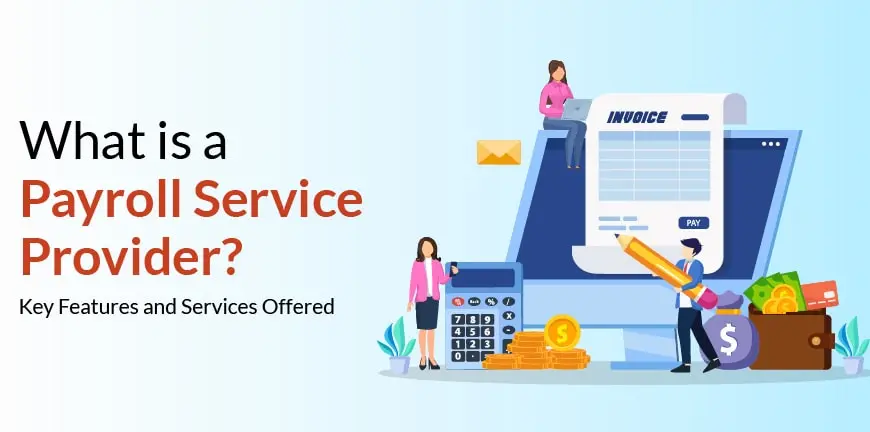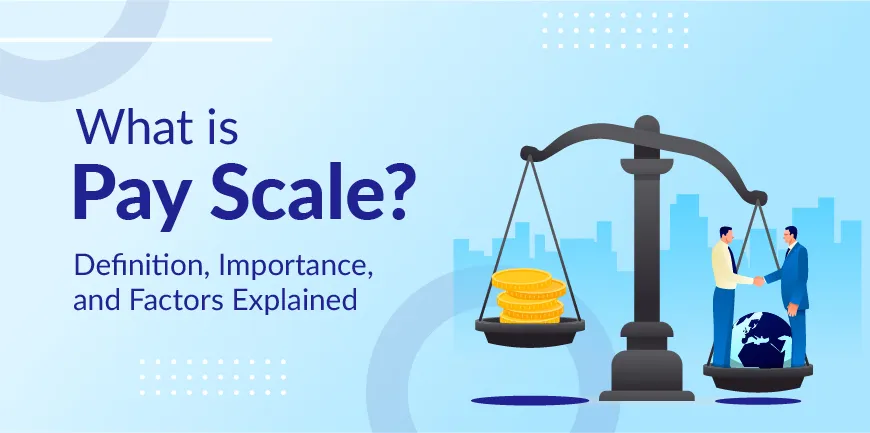
What is a Payroll Service Provider?
31/03/2024
What is On-demand Recruitment?
04/04/2024Per the Deloitte Global payroll survey, 2020, only 56% of organizations with 5000+ employees had a standardized payroll across the enterprise. This percentage decreased further down to 27% in small business organizations. It’s not uncommon that a lack of payroll standardization has led to many errors.
Payroll errors are far too common, especially if you own a small business and do not have a dedicated payroll expert or bookkeeper. Large businesses, though, must and mostly will have a dedicated payroll expert or a third-party payroll provider to manage their payroll process, as they have a huge number of employees making it impossible to run the payroll by themselves. However, sometimes, even experts make mistakes while running payroll.
For effective payroll management, you need to make sure that your employees are paid correctly, on time and in compliance with applicable laws and regulations. But as we mentioned, even experts make payroll mistakes at times. Without the right tools and resources, employee payroll can be prone to a lot of mistakes that can cause increased employee turnover rates, loss of productivity, time, and money.
Employees may have many expectations from the employer, but their most primary expectation is to receive the correct pay on time.
Most Common Payroll Errors and How to Avoid Them
While an employer may not intend to disburse the wrong amount of salary or delay the process, many external and internal factors may stand in the way of delivering payments.
To know how to reduce payroll errors you must first determine what the errors are. Half your work is done when you figure out your errors, because the solutions are always quite simple and straightforward.
You need to watch out for the errors mentioned below while processing your payroll, if you want to ensure smooth and effective payroll management, that benefits the employee.
1. Misclassification of employees
Now you may have employees working full-time on an hourly basis, on a contract basis or freelancing for you. But you must make sure you have classified them under the right categories. Misclassifying employees can result in the disbursement of incorrect pay leading to underpayment or overpayment of employees. Here are some common misclassification errors that can be made-
- When an employer does not correctly determine if an employee should be exempt from overtime. However, in terms of Indian employment law, all employees must receive overtime pay for any hours worked over 48 hours per week unless they are classified as exempt.
- When an individual is classified as an independent contractor and not as an employee. This can cause confusion while calculating their pay.
One incredibly significant example of how misclassification cost a company resources and reputation happened a few years ago. In 2019, Infosys, one of India’s IT giants, had to pay $800,000 to California for misclassifying its foreign workers and avoiding California payroll taxes such as unemployment insurance, disability insurance, and employment training taxes.
Solution: Learn local laws that govern compliance
Some of the things you can do to avoid misclassification are-
- Consult with local legal experts.
- Review contracts with all the independent contractors.
- Train managers on misclassification.
- Convert contractors to employees if you discover that you have misclassified them.
2. Miscalculation of pay
Receiving incorrect pay is the most frustrating thing for an employee because it is what they eagerly look forward to after putting in days of arduous work. Miscalculations can cost you precious time, as you would need to dedicate a lot more extra hours to determine the mistake, and recalculate and correct the errors after the payroll has been processed.
The British superstore chain Asda left 5,529 employees waiting for their full wages. Some staff were missing over £500 of their earned wages.
The clothing retailer Next underpaid by up to £200 a month. In this case, the company noted that the problem was caused by the implementation of a new computer system that went wrong.
Regardless of the reason, amid a cost-of-living crisis, these mistakes are even more costly for employees.
Solution- Automate your payroll
A digital tool, or payroll software, can easily eliminate these errors by avoiding the fuss of manual data entry. An automated payroll system can help enter and calculate data accurately in just a few clicks saving you time and reducing errors.
3. Not tracking employee hours and time
If you do not log overtime hours correctly, it can lead to improper payments. Most times, they are underpaid. This can lead to corrections spanning many tax years. Not only does this take a huge amount of time but it can cause unrest in employees when they are underpaid or overpaid and must receive or return the money to the company, respectively.
Some of the scenarios where overtime payment errors can occur are:
- When employees are working during break time
- When they are logging in more hours than standard office hours or are required to participate in activities like training, building outside the normal office hours
- When they spend time traveling between work sites
Solution: Digital time tracker
There is a simple solution to this. Invest in a digital time-tracking system like Prohance. A system like Prohance can automatically record employee hours and calculate overtime, reducing payment errors.
4. Skipping reporting of all forms of taxable employee compensation
Employee pay is not just about the salary, overtime, and bonuses. There are other forms of taxable compensation other than the traditional forms of employee pay like-
- Stock options
- Employee rewards like gift cards, food allowance, shopping allowance cards, etc.
- Personal use of a company car
While a small gift card may not seem like quite a small compensation, the concerned government bodies may view it as part of payroll, and not reporting it can result in penalties, affecting both the employees and the organization.
Solution: Outsourcing to an expert third-party provider
If you have the resources, you can outsource these responsibilities to an expert third-party payroll service provider, and they will make sure that all your taxable employee compensation is reported accurately. If you are a small business, you can find an online bookkeeping tool that can simplify your payroll process and ensure proper reporting of all tax forms.
5. Disorganized records
Your payroll records must be organized and maintained properly. If you fail to do so, it could become a recipe for disaster. If you are still relying on manual data entry or Excel sheets you need to stop now. Not only is it outdated and tedious but it can cause major errors like missing an employee payment or following up on things that need your attention.
Solution: Bookkeeper/other payroll tools
In order to keep your records organized it is best to either have a bookkeeper whose sole focus would be to maintain and store all records in place or if you do not want to incur the costs of hiring a full-time employee you can use a payroll/HR tool that can track employee hours, convert time sheets to wages, calculate taxes, safely store everything in one place, and help you pay everyone on time.
6. Missing important deadlines
Employees expect their salaries to be imbursed into their accounts on time during every pay cycle. Missing these deadlines can create unrest and chaos among employees. Additionally, missing tax filing deadlines can lead to late filing fees and other regulatory penalties for your organization.
Solution: Bookkeeper/payroll software
A dedicated bookkeeper will make sure to schedule everything, from when to start payroll so everyone is paid on time, to when an employee exceeds their tax threshold. They ensure to alert you on time or much before time to keep you accountable and so that you do not miss critical deadlines.
Best payroll practices to avoid errors and improve payroll Management
Here are some important tips you can follow to increase your payroll management efficiency-
- Create a manual describing all your payroll activities, including when payroll exceptions are made and the procedures for reviewing and approving changes. You should also create a policy for records management and retention.
- Make sure that your payroll provider understands your payroll priorities knows how to align with your goals and can ensure a smooth transition.
- Automate and integrate your payroll processes to easily manage your workforce and achieve consistency.
- Create a detailed payroll calendar and checklist for weekly and monthly activities so you can plan the time you spend on payroll more effectively.
- Keep track of the latest laws and regulations to avoid noncompliance, leading to penalties or fines.
Wrapping up
Payroll errors do happen sometimes, no matter how careful you are. But by taking a few proactive steps you can minimize or avoid most of the common payroll errors. Getting the payroll right is one of the best ways to exceed employee expectations and build their trust in the organization.
With the support of a reliable partner and an integrated payroll system, you can build an efficient payroll process, stay in compliance, and deliver error-free paychecks to your employees.




